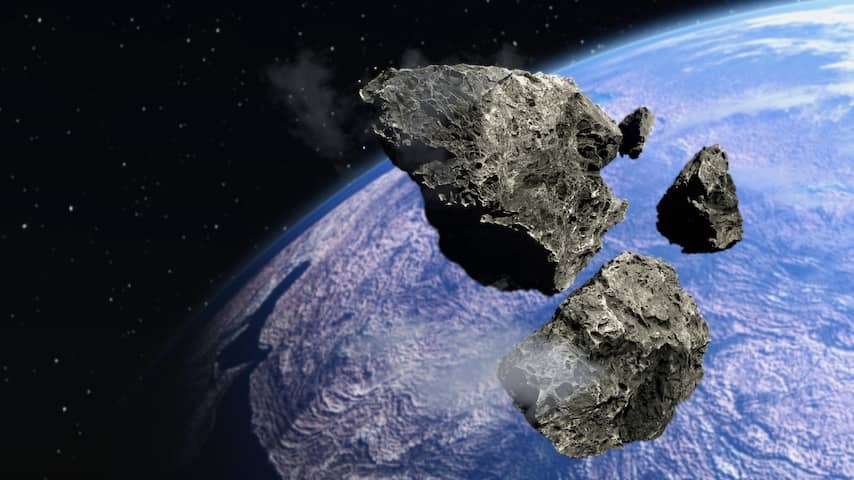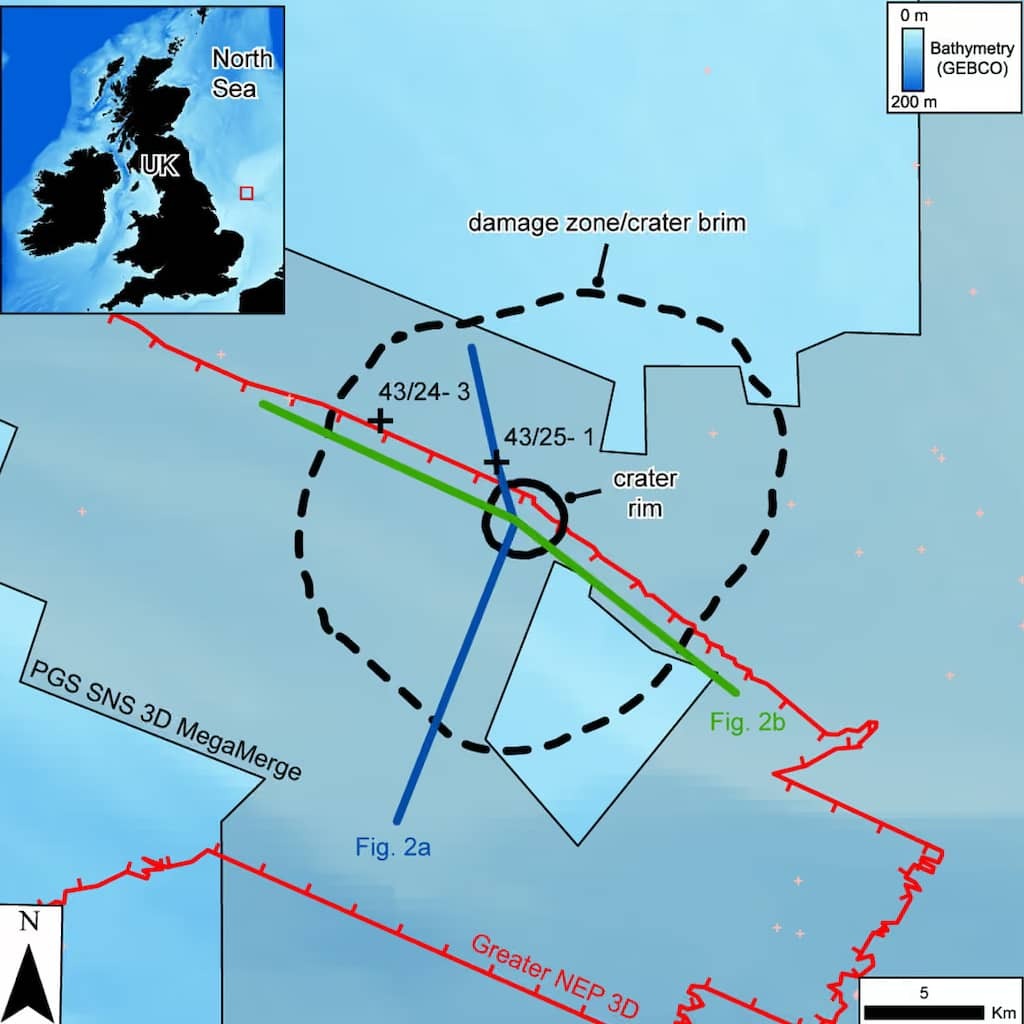
For years it was unclear how a large crater in the North Sea had arisen. Now geologists can demonstrate that the impact of a asteroid caused a 100 meter high tsunami more than 43 million years ago.
The crater is now 700 meters below the seabed. In the meantime, the gap is covered with other types of soil. Geologists discovered the crater in 2002, about 130 kilometers from the coast of Yorkshire. The scientist did not yet have a clear explanation for the creation of the crater.
They saw an impact of a space pots as one of the possible causes. But many geologists assumed another theory: they thought the crater had been created by the movement of salty rocks under the seabed.
Geologists from Heriot-Watt University in the Scottish capital Edinburgh now have proof that the crater was caused by the impact of a asteroid. That happened 43 to 46 million years ago and the asteroid had a diameter of approximately 160 meters. To illustrate: that is the size of a cathedral such as Notre-Dame in Paris.
The geologists used new seismic images of the seabed for their research. They made those images by sending sound waves into the ground.
Damaged crystals are proof of impact
The scientists also took monsters from an oil source in the seabed. In it, the geologists found damaged crystals of rocks. Those crystals are at the same depth as the impact and are therefore damaged by the asteroid, the researchers conclude.
“This without a doubt proves the hypothesis of an impact,” says professor Uisdean Nicholson, who led the investigation. “The crystals have a structure that can only arise with an extreme impact.”
After the impact of the asteroid, fragments from the seabed flew into the air for about 1.5 kilometers. A tsunami of 100 meters high was also created.
According to Nicholson, the crater has been well preserved. That is exceptional, since erosion and the shift of earth plates affects many craters often millions of years old. The results of the research can provide more insight into the consequences of impacts of planetoids.
For years, it was Unclear How a Large Crater in the North Sea was formed. Now, Geologists can demonstrate that the impact of a planetoid over 43 Million years ago caused a 100-meter-high tsunami.
The Crater is Currently 700 Meters Below the Seabed. In The Meantime, The Hole Has Been Covered with Other Types of Soil. Geologists Discovered the Crater in 2002, Approximately 130 kilometers from the Coast of Yorkshire. At the time, scientists did not have a clear explanation for the formation of the crater.
They Saw the Impact of a Space Rock As One of the Possible Causes. However, many Geologists Assumed A Different Theory: They thought that the crater was formed by the movement of Salt Rocks Beneath the Seabed.
Geologists from Heriot-Watt University in Edinburgh, Scotland, Now have evidence that the crater was formed by the impact of a planetoid. That happened 43 to 46 million years ago, and the planetoid had a diameter of approximately 160 meters. For illustration: That is the size of a cathedral like Notre-Dame in Paris.
The Geologists Used New Seismic Images of the Seabed for Their Research. They made those images by sending sound waves into the ground.
Damaged Crystals are proof of impact
The scientists also took samples from an oil well in the seabed. In IT, The Geologists Found Damaged Crystals of Rocks. These crystals are at the same depth as the impact and are therefore damaged by the planetoid, the researchers conclude.
“This undoubtedly proves the hypothesis of an impact,” Says professor Uisdean Nicholson, Who Led The Research. “The crystals have a structure that can only arise with an extreme impact.”
After the impact of the planetoid, fragments flew from the seabed about 1.5 kilometers into the air. A 100-meter-high tsunami also arose.
Accordance to Nicholson, The Crater Has Been Well Preserved. This is exceptional, as erosion and the shifting of tectonic plates affect many craters that are often millions of years old. The Results of the Research Can Offer More Insight Into the Consequences of Planetoid Impacts.
